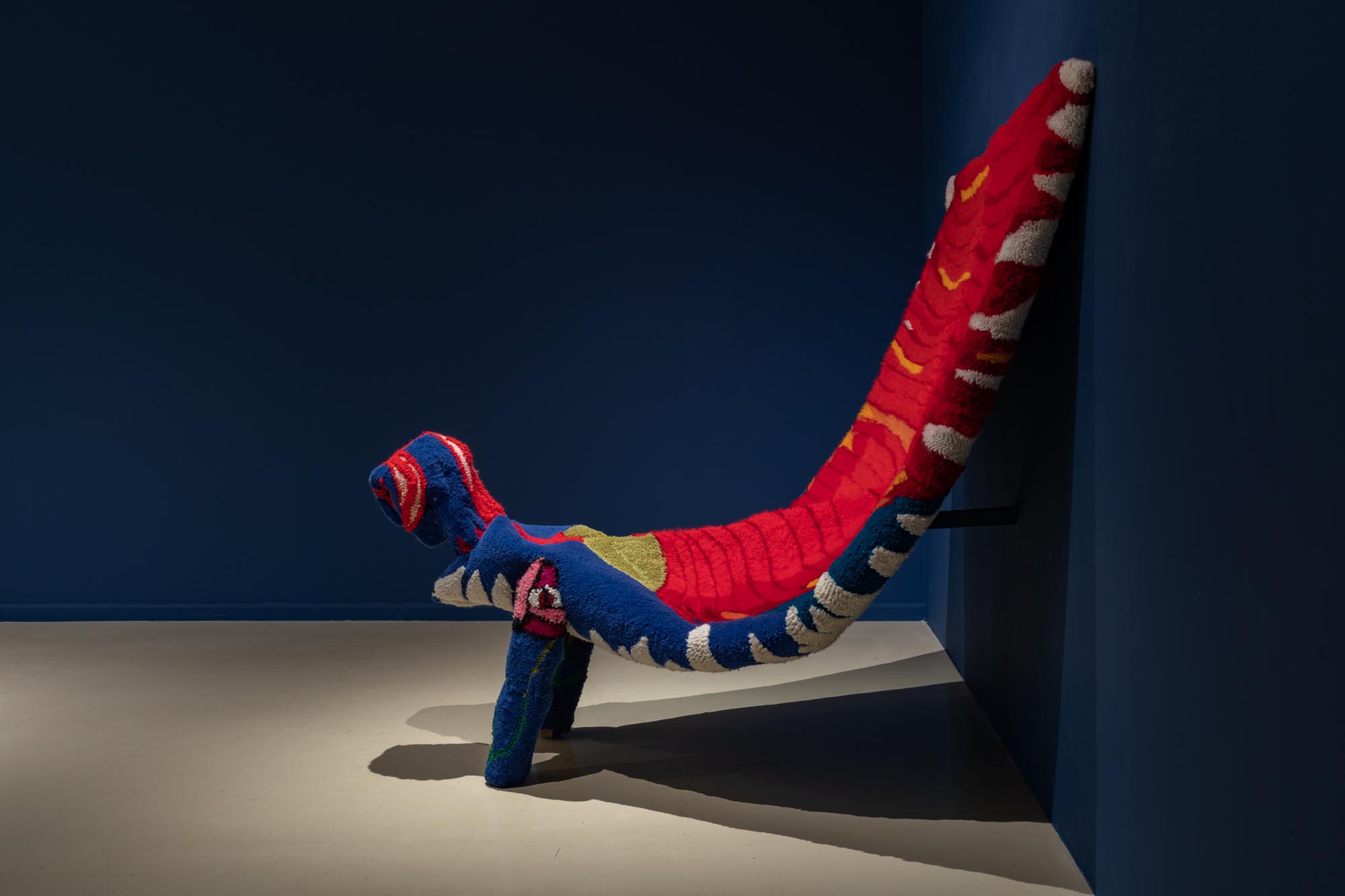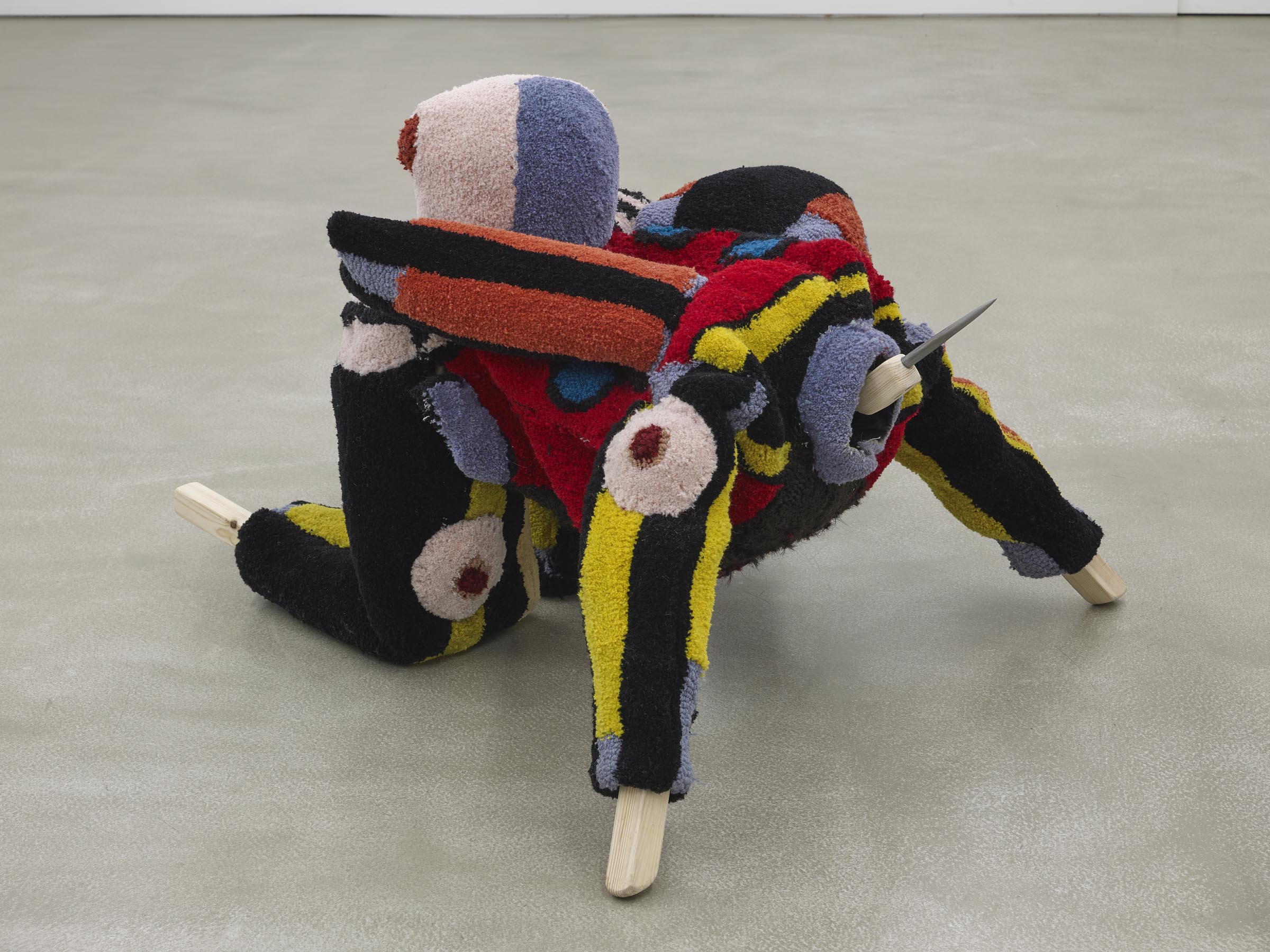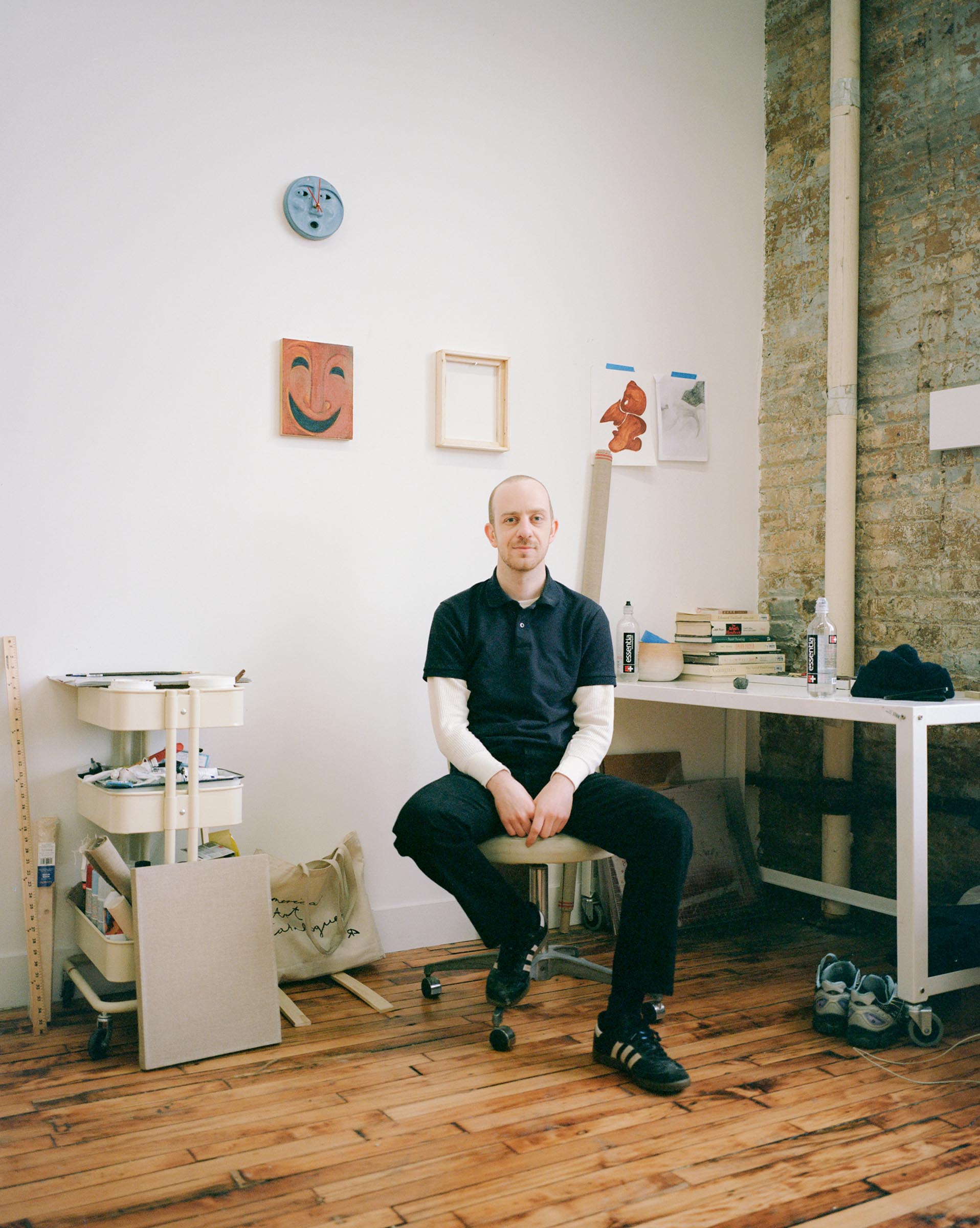How did you get into making art?
I was always drawing as a kid and remember that when I was about five my grandfather said that art-making should be my vocation in life. I’m not sure how serious was he but I made a mental note of it and always returned to it in my mind. As I was growing up creative work became an anchor for me, something that provided me with a space for imagining, processing and companionship. Today, although the development of new work occasionally fills me with feelings of doubt and dread, it continues to be a powerful source of identity and belonging.
What are you currently working on?
I’m currently working on two solo shows. The first one, with ADA gallery in Rome, will open on the 28th of September 2023. The second will be my first institutional show in London with Gasworks in February 2024.
I am making two diffrent boies of work that include tufted wearable sculptures and performance.
My work explores themes of femininity, craft and storytelling and I often refer to specific myths, folk tales and historic periods.
Anna Perach
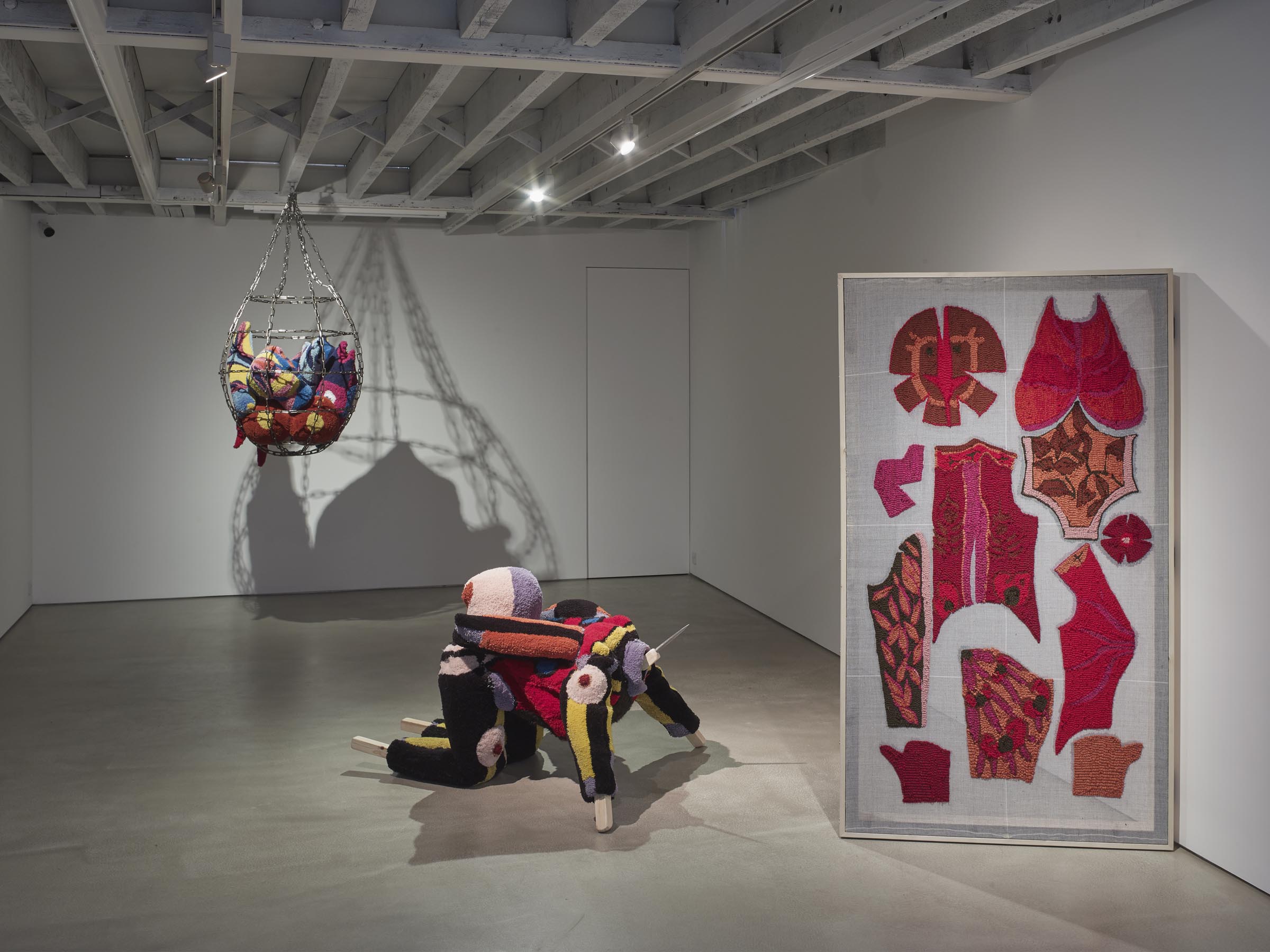
What inspired you to get started on this body of work?
In the past two years, my research focused on the history of witchcraft and how it was demonised during the period of enlightenment and rationality. This history corresponds with a patriarchal social structure that debilitated women and restricted them to the domestic space. For example, I have been looking at 17th century anatomical Venus sculptures, made for medical use. The anatomical Venuses were shaped with the ideal Western woman in mind: fair skinned, long blond hair, lying naked on her back. The head is slightly tilted back, the lips are parted and the expression is orgasmic. Venus’s body is passive and at the disposal of the male practitioner to dissemble and construct in whichever way he chooses. A similar approach to the female body appeared 200 years later in the psychiatric work of Jean-Martin Charco – the head physician of the Pitié-Salpêtrière Hospital in Paris who treated women diagnosed with hysteria. In both cases, the female body is viewed by religious or scientific male authority as one that transgresses the rules of morality and nature. In my work I engage with these histories through the depiction of characters that subvert the dictatorship of reason. My characters inhabit the uncomfortable space of between, inside, and outside of their bodies. The characters’ bodies are in transition and transformation, disobeying the boundaries of the self as an impenetrable unit and by metaphor the boundaries of societal rules.
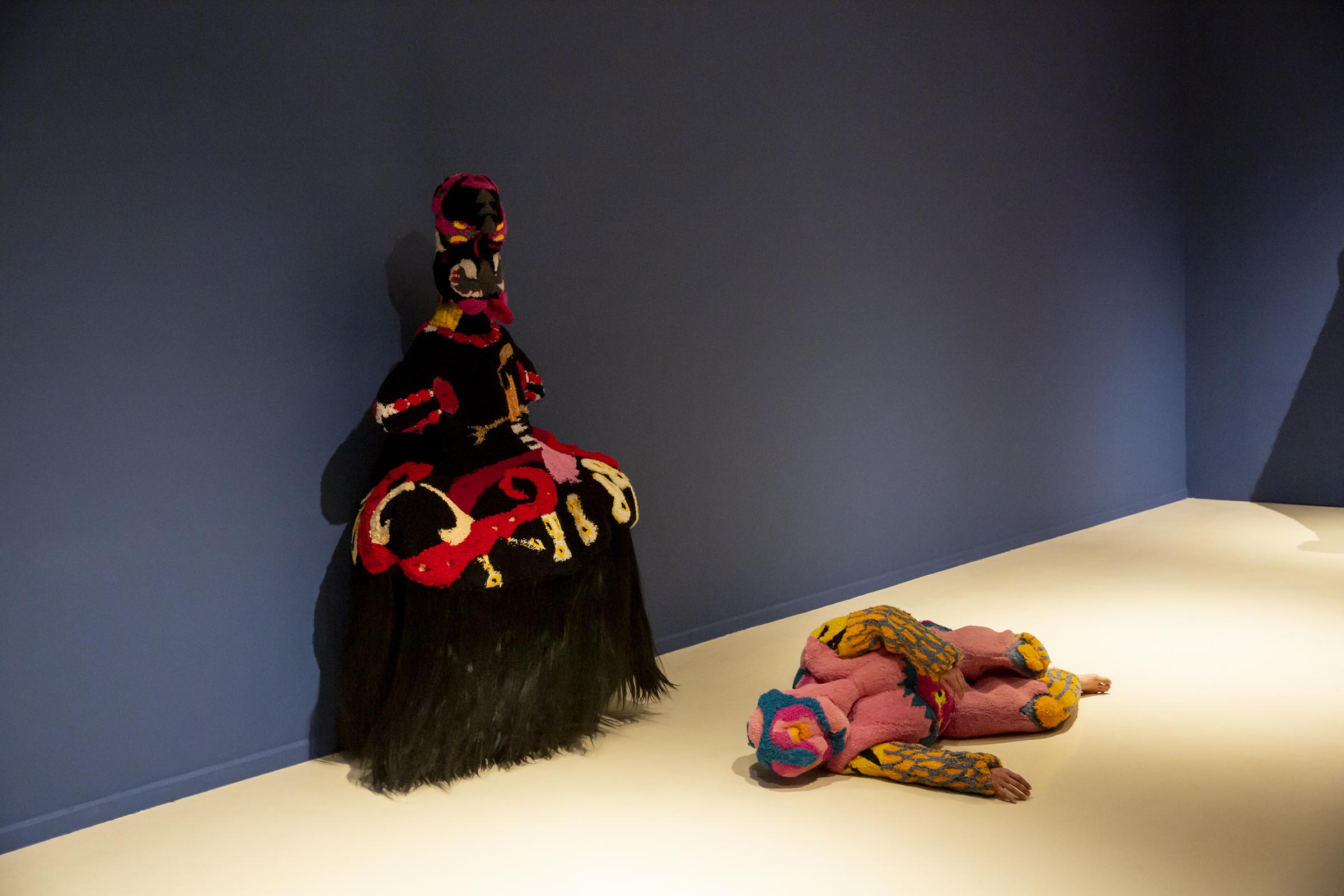
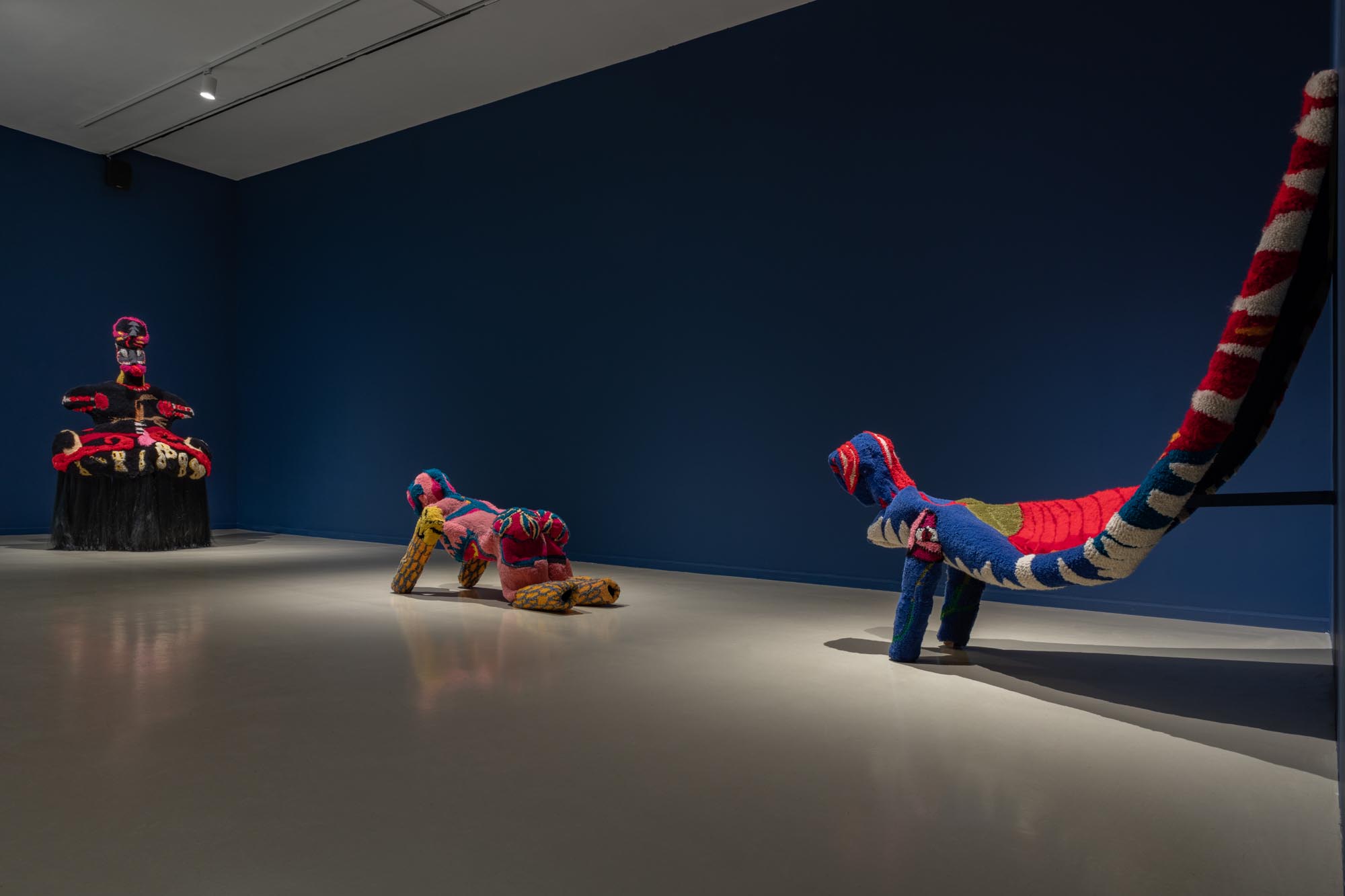
Do you work on distinct projects or do you take a broader approach to your practice?
My work explores themes of femininity, craft and storytelling and I often refer to specific myths, folk tales and historic periods. These sources accumulate and direct me to see recurring patterns which I find to resonate with my own personal experiences. The combination results in a form which is both archetypical and very personal. Although each project is distinct in the story it tells, or in the method through which it’s transmitted, all the works derive from the same mechanism of operating in an attempt to deepen the visual research about the same subject matter.
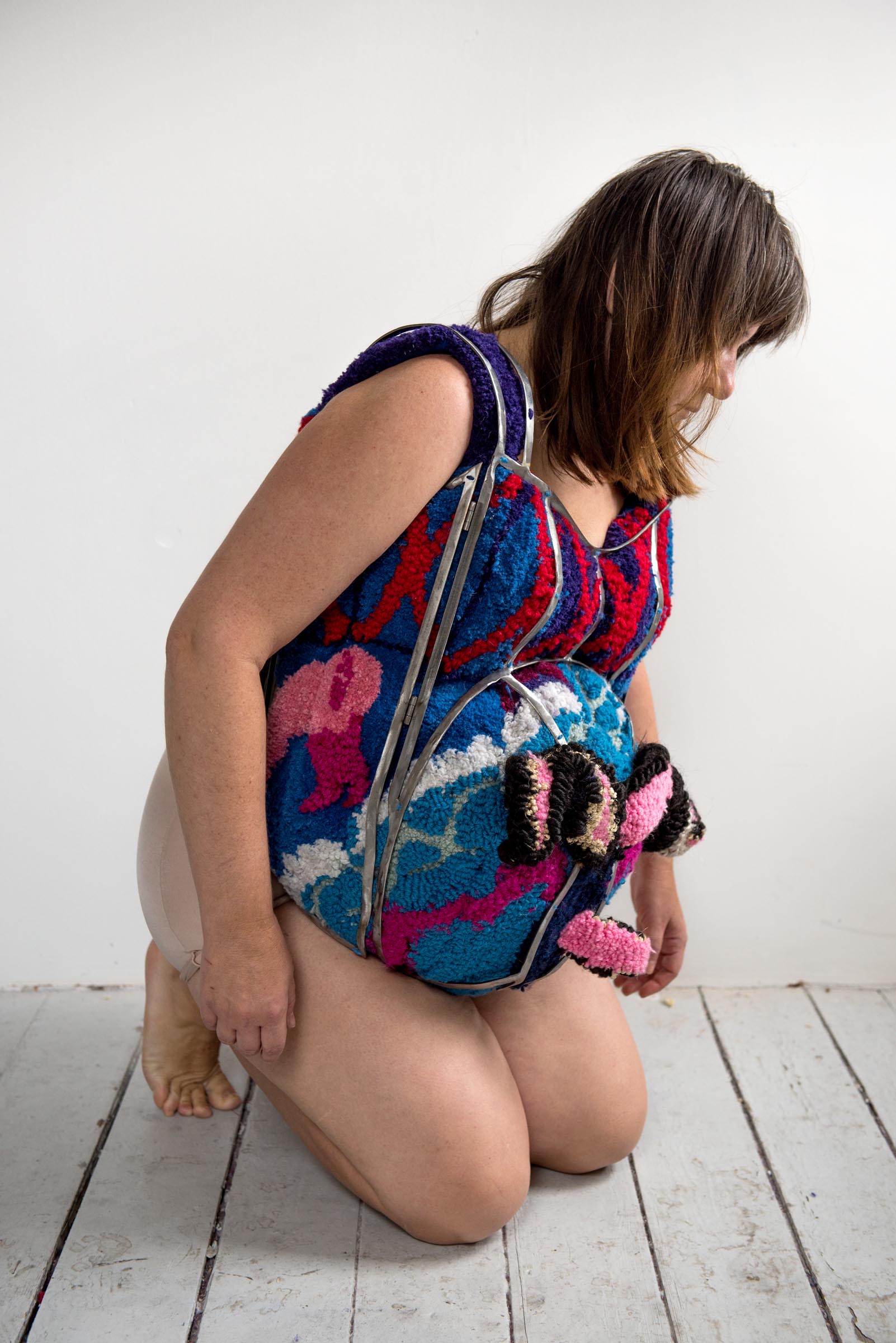
What’s a typical day like in your studio?
My mind is very disorganised so I require my working space to be meticulous to be efficient in my work. As a result the first and the last thing I do when I arrive and leave the studio is tidying up. In the start of the day I water my studio plants or prepare my working materials for that day and in the end of the day I sweep the floor from all the left over yarns and put back anything that is no longer needed. Throughout the day I work while listening to podcasts and audio books. The podcasts are important instrument for me as I need to hear voices in the background and they became my studio friends and occasionally mentors. As my practice is quite manually laborious and requires equipment that I can access only in the studio I try to focus on making and leave emails and anything computer-related to outside of studio hours. I really enjoy studio visits as I find them to be a great opportunity to expand my artistic network as well as learn about my practice through conversing with others.
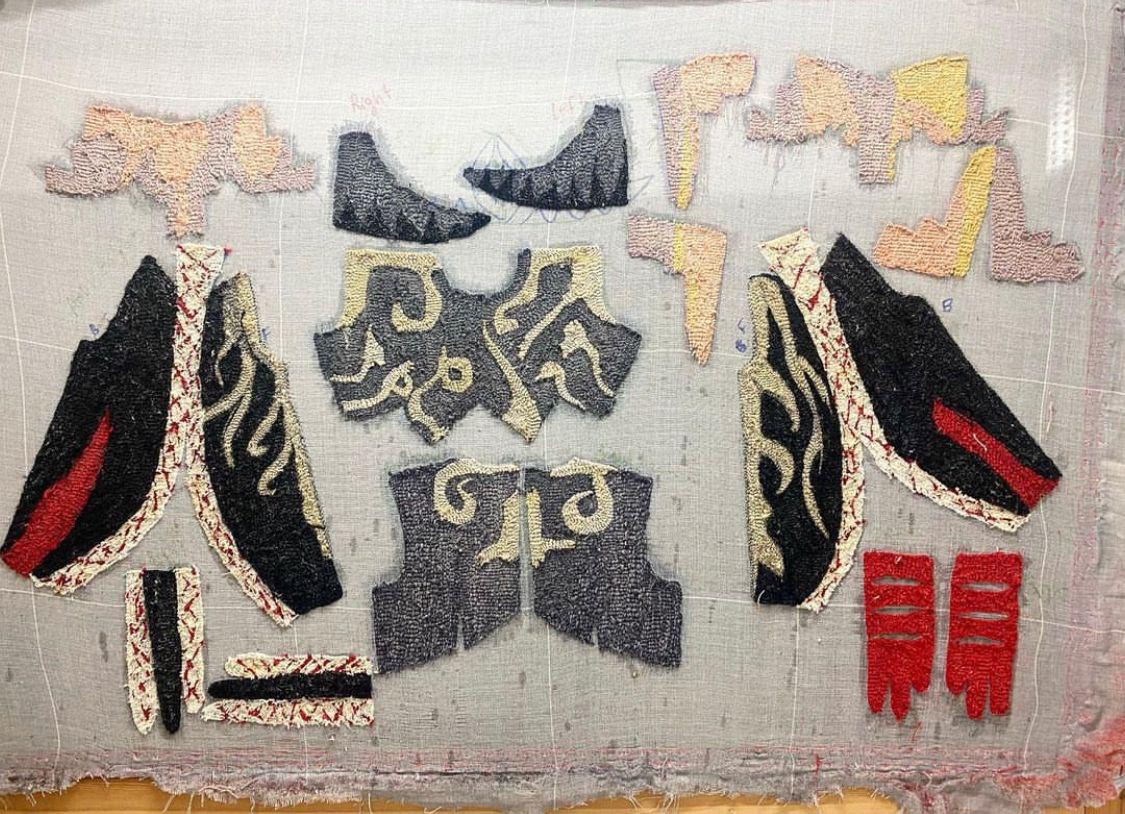
Who are your favorite artists?
It’s a mix of older generation artists including Paula Rego, Leonora Carrington, Niki De Saint Phalle, Marlene Dumas, Magdalena Abakanowics, Louise Bourgeoeis, Alice Neel, Berlinde Bruyckere, Alina Szapocznikow and current established and upcoming artists including Hannah Levy, Ivana Basic and Marguerite Humeau. I also admire the works of my fellow artists in London such as Saelia Aparicio, Anousha Payne, Rafal Zajko, Emma Cousin and many more.
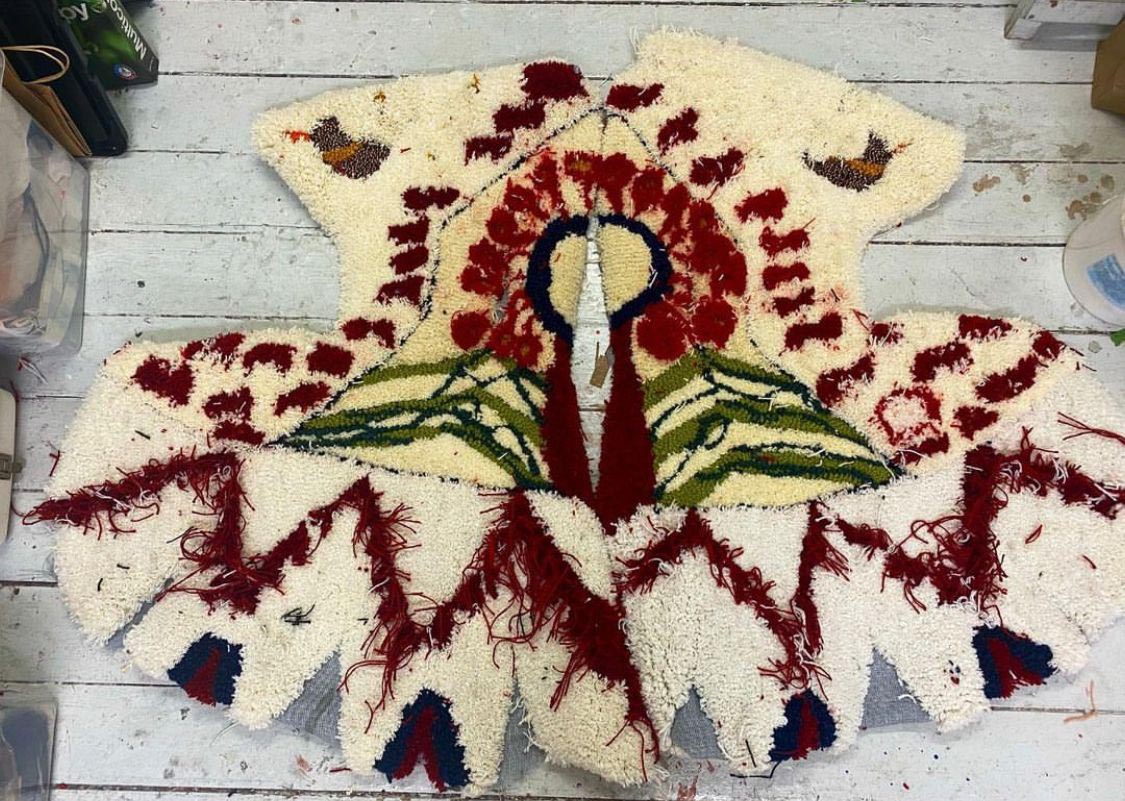

Where do you go to discover new artists?
I have the great fortune of living in London where exhibitions open on a daily basis and as a result I’m exposed to an amazing variety of art from emerging as well as legendary artists, whether in the city’s many institutions or in contemporary galleries. So I find that it’s more a matter of making the time to see all this abundance rather than having access to it. Another great source is Instagram which serves as a digital library that is updated every day and provides me with an easy access to many inspiring images. Finally, via my research I find an amazing legacy of other artists I’m having conversations with and I love to go “down the rabbit hole” and see how visual ideas correspond to each other.
Learn more about the artist by visiting the following links:

